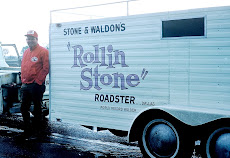


To post anything else on this day would be
an extreme disservice to all who died that Sunday,
December 7, 1941.
At 8 o'clock that day Japanese planes attacked
the naval base, army base, and other important
targets located at 'the Pearl of the Pacific'...later
to become the 50th state in the union.
Planes, ships, storage facilities, and almost three
thousand men were lost that day in the surprise
attack. I have visited many memorials in my life, but
none is more moving than my trip to the Battleship
Arizona. From the platform you can actually look down
and see the ship just below water level. Bubbles continue
to seep from the ship, and she remains listed by the
Navy as being an active ship. The reason is that over
two thousand sailors are still serving there.
Here is a little more information on the attack that
forced America into World War II..
Following Japanese expansion into French Indochina after the fall of France, the U.S. ceased oil exports to Japan in July 1941, in part because of new American restrictions on domestic oil consumption.[14] President Franklin D. Roosevelt had earlier moved the Pacific Fleet to Hawaii and ordered a military buildup in the Philippines in the hope of discouraging Japanese aggression in the Far East. As the Japanese high command was (mistakenly)[15] certain any attack on the British Southeast Asian colonies would bring the U.S. into the war,[15] a devastating preventive strike appeared to be the only way[15] for Japan to avoid U.S. naval interference. An invasion of the Philippines was also considered to be necessary by Japanese war plans, while for the U.S., reconquest of the islands had been a given of War Plan Orange in the interwar years.
War between Japan and the United States had been a possibility each nation had been aware of (and developed contingency plans for) since the 1920s, though tensions did not begin to grow seriously until Japan's 1931 invasion of Manchuria. Over the next decade, Japan continued to expand into China, leading to all out war in 1937. In 1940, Japan invaded French Indochina in both an effort to control supplies reaching China, and as a first step to improve her access to resources in Southeast Asia. This move prompted an American embargo on oil exports to Japan, which in turn caused the Japanese to initiate their planned takeover of oil production in the Dutch East Indies.[16] Furthermore, the transfer of the U.S. Pacific Fleet from its previous base in San Diego to its new base in Pearl Harbor was seen by the Japanese military as the U.S. readying itself for a potential conflict between the two countries.



No comments:
Post a Comment